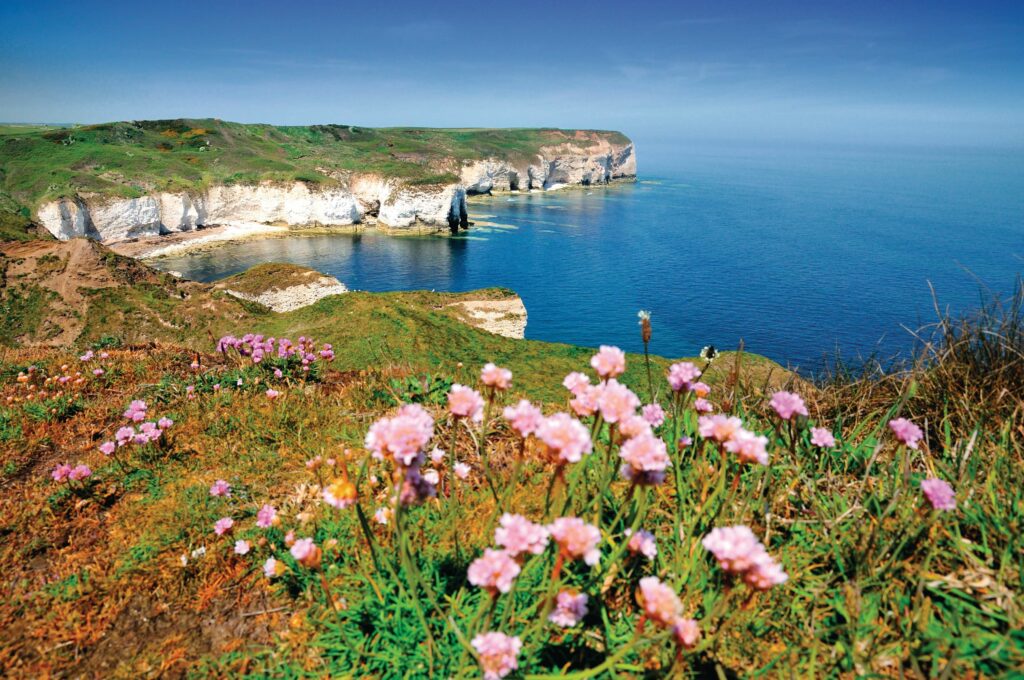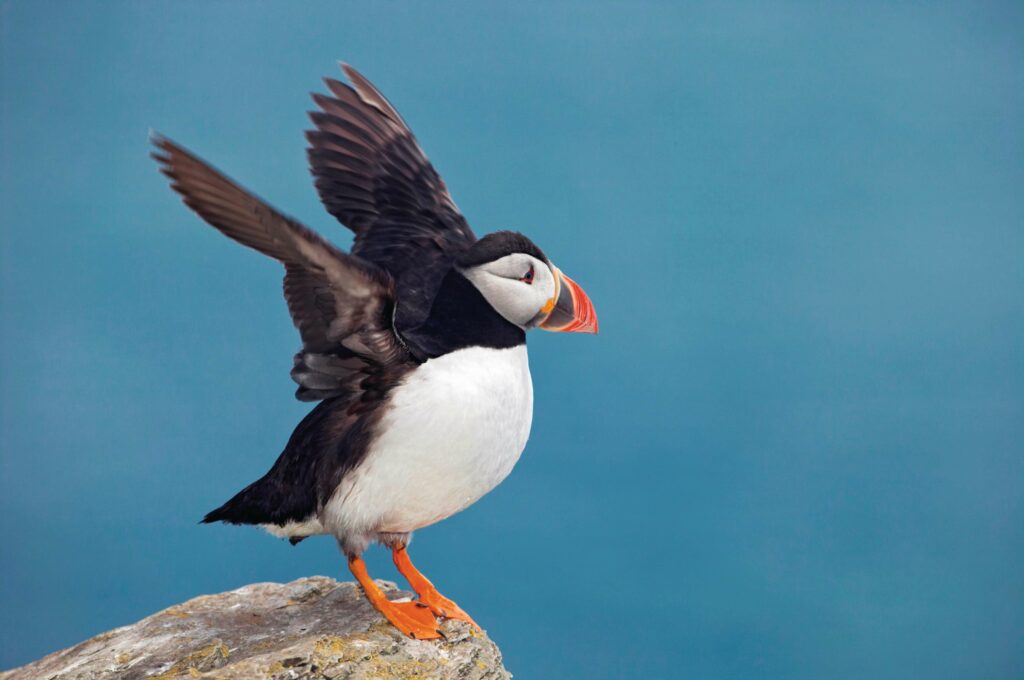DAY OUT: Bempton and Flamborough Cliffs, East Riding of Yorkshire
White cliffs of Yorkshire
Witness whirling fulmars and diving gannets from Flamborough’s towering chalk cliffs, says Chris Gee

You can smell and hear the seabird colony at Flamborough Cliffs long before you get your first sighting. A cacophony of sound accompanied by that unmistakable smell of huge quantities of seabird droppings draws you along to the brilliant white chalk cliffs of the Yorkshire Wildlife Trust’s Flamborough Cliffs Nature Reserve.
This is one of those rare locations on the English mainland where you can enjoy close encounters with nesting puffins, as well as guillemots, razorbills and those fantastic aeronauts, fulmars. The other star-turn bird here is the kittiwake; its characteristic call will help with identification. It’s incredible that these seabirds manage to breed on the impossibly narrow ledges of Flamborough’s chalk cliffs.
WILDFLOWERS AND GUANO
North Landing makes a good base for exploration. Head east on the coastal path to Flamborough Head for heady clifftop views of this spectacular coastline and some intimate views of its seabird colonies. A sunny spring day is best for enjoying both the birds and the emerging wildflowers on the path, from the bright-pink red campion to the egg yolk and white of oxeye daisies.
Head west along the coastal path from North Landing to reach the RSPB Bempton Cliffs Nature Reserve. Along the way, enjoy the spectacle of gannets diving like arrows into the sea below, as yet more gannets head to and from their nesting sites on the clifftops at Bempton. These cliffs are nationally important as a gannet nesting site and a spring visit is the perfect time to see close-up views of courting and squabbling gannets.

While the two reserves are locally famous for their nesting seabirds, in winter this is also a great place to spot short-eared owls. Throughout the year as dusk falls, look for barn owls quartering the field margins that fringe the cliffs.
CRUISE THE COAST
For an altogether different point of view, book one of the RSPB’s sea cruises on the 1940s-built Yorkshire Belle (yorkshire-belle.co.uk/rspb-seabird-cruises). Cruises sail regularly in spring from Bridlington Harbour and offer an excellent way to observe the seabirds floating in rafts on the ocean or flying from the feeding grounds to their nest sites. Marvel at the 120-metre-high chalk cliffs from the deck of the Yorkshire Belle, and spot visible clues to the massive geological upheavals that shaped this striking landscape.
Chris Gee is the author of Walking the Yorkshire Coast: A Companion Guide.